Filippo Malandra
Synergies Between Federated Learning and O-RAN: Towards an Elastic Virtualized Architecture for Multiple Distributed Machine Learning Services
Apr 14, 2023Abstract:Federated learning (FL) is the most popular distributed machine learning technique. However, implementation of FL over modern wireless networks faces key challenges caused by (i) dynamics of the network conditions, (ii) coexistence of multiple FL services/tasks in the system, and (iii) concurrent execution of FL services with other network services, which are not jointly considered in prior works. Motivated by these challenges, we introduce a generic FL paradigm over next-generation (NextG) networks, called dynamic multi-service FL (DMS-FL). We identify three unexplored design considerations in DMS-FL: (i) FL service operator accumulation, (ii) wireless resource fragmentation, and (iii) signal strength fluctuations. We take the first steps towards addressing these design considerations through proposing a novel distributed ML architecture called elastic virtualized FL (EV-FL). EV-FL unleashes the full potential of Open RAN (O-RAN) systems and introduces an elastic resource provisioning methodology to execute FL services. It further constitutes a multi-time-scale FL management system that introduces three dimensions into existing FL architectures: (i) virtualization, (ii) scalability, and (iii) elasticity. Through investigating EV-FL, we reveal a series of open research directions for future work. We finally simulate EV-FL to demonstrate its potential to save wireless resources and increase fairness among FL services.
Experimental End-To-End Delay Analysis of LTE cat-M With High-Rate Synchrophasor Communications
Jul 11, 2022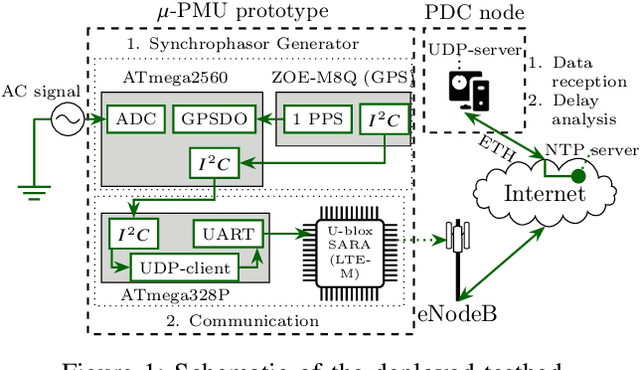


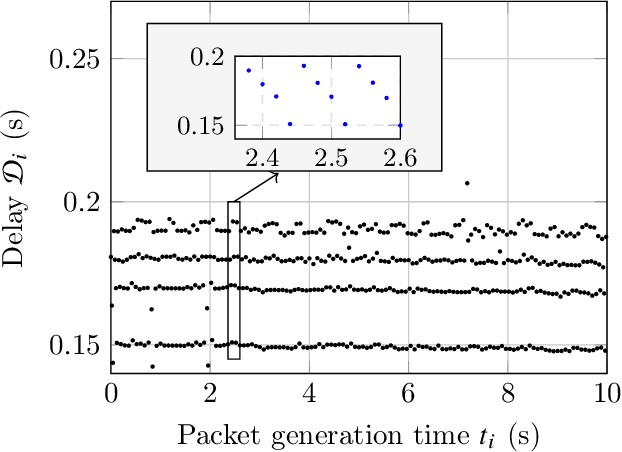
Abstract:Micro-Phasor Measurement Units (u-PMUs) are devices that permit monitoring voltage and current in the distribution grid with high accuracy, thus enabling a wide range of smart grid applications, such as state estimation, protection and control. These devices need to transmit the synchronous measurements of voltage and current, also known as synchrophasors, to the power utility control center at high rate. The use of wireless networks, such as LTE, to transmit synchrophasor data is becoming increasingly popular. However, synchrophasors are included in small frames and it would be more efficient to use low power cellular solutions, such as LTE cat-M. In this work, we present experimental research on the deployment of a u-PMU with the ability to connect over a commercial LTE cat-M network. The deployed u-PMU is built with off-the-shelf hardware, such as Arduino microcontrollers, and is used to transmit data-compliant with the IEEE C37.118.2 standard at a variable rate from 1 frame/s to 80 frames/s. A detailed network performance analysis is carried out to show the suitability of LTE cat-M to support u-PMU communications. Experimental results on performance indicators, such as delay and jitter, are reported. The effect of the LTE cat-M access mechanism on the time distribution of frame arrivals is also thoroughly analyzed.
A Machine Learning framework for Sleeping Cell Detection in a Smart-city IoT Telecommunications Infrastructure
Oct 02, 2019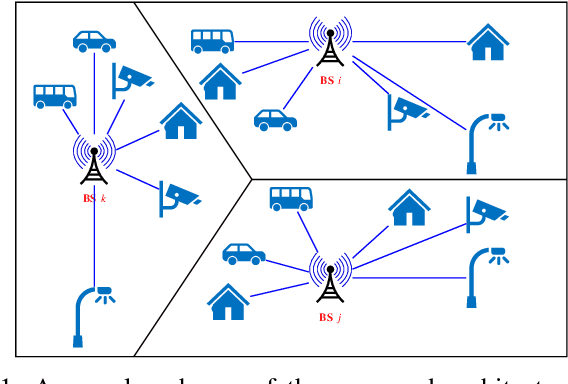
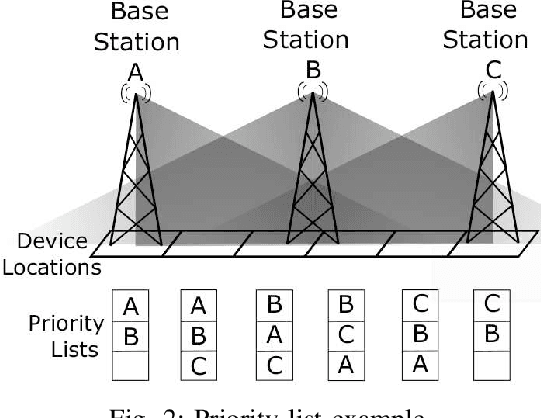
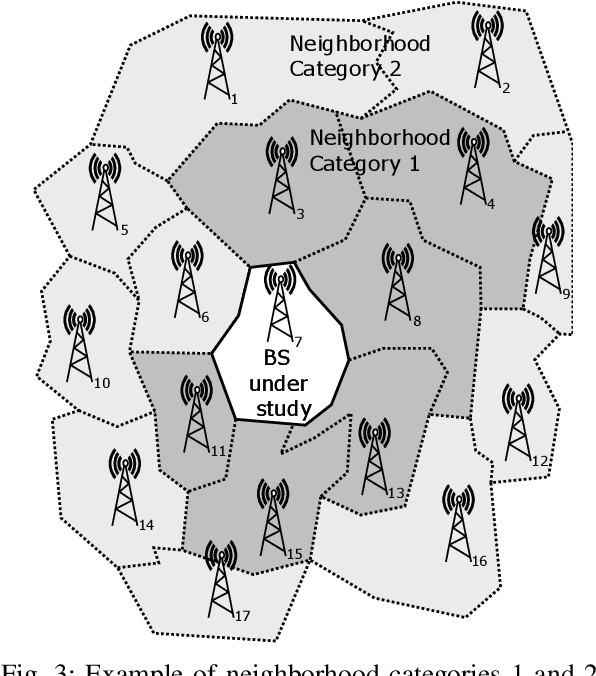
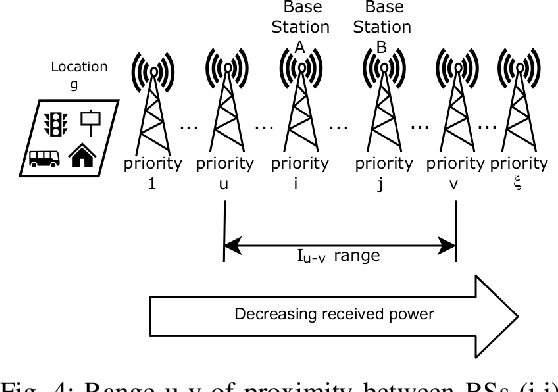
Abstract:The smooth operation of largely deployed Internet of Things {IoT} applications will depend, among other things, on effective infrastructure failure detection. Access failures in wireless networks Base Stations (BSs) produce a phenomenon called "Sleeping Cells", which can render a cell catatonic without triggering any alarms or provoking immediate effects on the cell's performance, making it difficult to discover. To detect this kind of failures, we propose a Machine Learning framework, based on the use of Key Performance Indicator (KPI) statistics from the BS under study, as well as those of the neighboring BS with propensity to have their performance affected by the failure. A simple way to classify neighbors is to use Voronoi diagrams. In this paper we propose a much more realistic approach based on the nature of the radio-propagation and the way the devices choose the BS to which they send access requests. We gather data from large-scale simulators that use real location data for BSs and IoT devices, and pose the detection problem as a supervised binary classification problem. We measure the effects caused on the detection performance, by the size of time aggregations of the data, the level of traffic and the parameters of the neighborhood definition. Extra Trees and Naive Bayes classifiers achieved Receiver Operating Characteristic (ROC) area under the curve scores of 0.996 and 0.993 respectively with False Positive Rates (FPRs) under 5 %. The proposed framework holds potential for other pattern recognition tasks in smart-cities wireless infrastructures, that would enable the monitoring, prediction and improvement of the Quality of Service (QoS) experienced by IoT applications.
 Add to Chrome
Add to Chrome Add to Firefox
Add to Firefox Add to Edge
Add to Edge